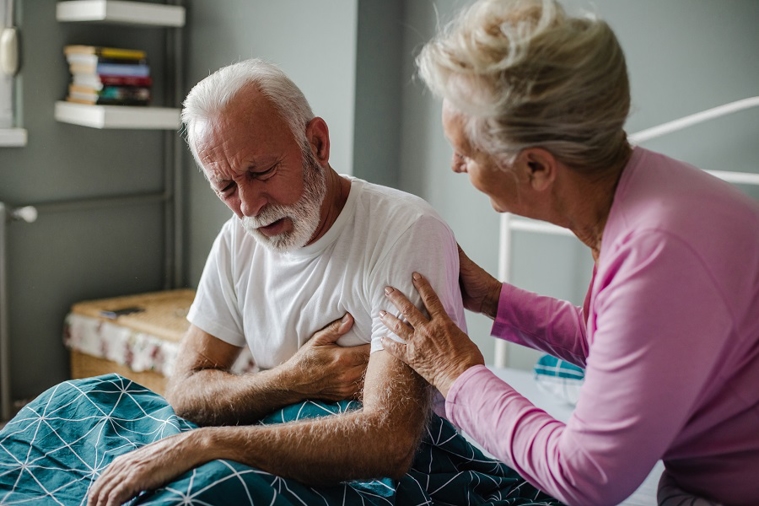How to spot a heart attack
Aug 31, 2021

When you think of a heart attack, you might picture someone clutching their chest and falling to the ground. But heart attack signs aren’t always so dramatic. Knowing the subtler heart attack symptoms is crucial to getting the timely care you need.
Heart attacks occur when there is a sudden blockage in blood flow to your heart. When this happens, your heart doesn’t get oxygen. If your heart doesn’t get oxygen quickly, parts of your heart muscle can begin to die.
The telltale heart attack sign
In both men and women, the most common heart attack warning sign is chest pain. People usually feel discomfort in the center of the chest. It might feel like pressure, fullness or squeezing. In some people, the pain lasts for several minutes or longer. For others, the pain comes and goes.
Lesser-known heart attack symptoms
Although most heart attacks cause chest pain, not every single person experiences this symptom. And some people may experience heart attack symptoms that are more noticeable or severe than the chest pain. In women especially, chest pain may not be the first symptom you notice. You might feel:
- Pain in one or both of your arms, neck, jaw or upper back
- Shortness of breath
- Nausea or vomiting
- Cold sweats or lightheadedness
Women may also have sudden weakness, indigestion or all-over body aches. Women are also more likely to feel extreme fatigue as a heart attack symptom. Given that these symptoms could indicate a variety of different health conditions, many women delay getting help for a heart attack. But acting quickly can save your life.
Heart attack treatments
When you have a heart attack, doctors need to start treatment right away to restore blood flow to your heart. Usually, you will receive some treatment before providers have confirmed that you are having a heart attack. You may get:
- Aspirin, which can reduce risks of further blood clotting
- Nitroglycerin, a medication that improves blood flow and reduces some of the pressure on your heart
- Oxygen therapy, when you receive oxygen through a mask over your nose and mouth
When doctors have confirmed that you are having a heart attack, they will usually treat you with:
- Clot-busting medicines. Certain medicines can help dissolve blood clots in your arteries that led to the heart attack. Ideally, you should receive these medicines as soon as possible and definitely within a few hours of a heart attack.
- Coronary angioplasty. Your provider places a small tube (catheter) through one of your veins, usually in your upper thigh. The catheter has a deflated balloon attached to the end. The doctor threads the catheter up to the blocked coronary artery. When in place, the balloon inflates to widen the opening and increase blood flow to the heart. Your doctor may place a small tube called a stent in the artery, which may stay in place for months or years.
What to do if you spot a heart attack
If you notice any symptoms of a heart attack, call 911 immediately. The sooner you receive treatment, the better your chances of a positive outcome.
Do not drive yourself to an emergency center or have someone else drive you. When you get an ambulance, emergency medical personnel can begin your treatment on the way to a hospital. Like with a stroke, minutes matter when it comes to heart attack treatment.
For more information about heart attacks and treatment, speak with your healthcare provider or find a provider near you.


